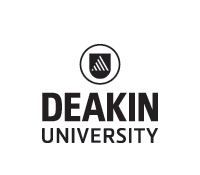SET111 - Sustainable Design
Unit details
| Year | 2025 unit information |
|---|---|
| Enrolment modes: | Trimester 1: Burwood (Melbourne), Waurn Ponds (Geelong), Online |
| Credit point(s): | 1 |
| EFTSL value: | 0.125 |
| Unit Chair: | Trimester 1: Saleh Gharaie |
| Previously: | Environmental Design |
| Prerequisite: | Nil |
| Corequisite: | Nil |
| Incompatible with: | SEJ101 |
| Educator-facilitated (scheduled) learning activities - on-campus unit enrolment: | 1 x 2 hour practical experience (studio) per week. |
| Educator-facilitated (scheduled) learning activities - online unit enrolment: | Online independent and collaborative learning including a 1 x 2 hour online practical experience (studio) per week. |
| Typical study commitment: | Students will on average spend 150 hours over the teaching period undertaking the teaching, learning and assessment activities for this unit. This will include educator guided online learning activities within the unit site. |
Content
This unit focuses on the principles of design and the use of computer-aided design (CAD) to develop solutions that reduce the environmental impact of artefacts in their production and/or use. Students will engage with sustainable design strategies and practices, learning how to create innovative design solutions that address environmental considerations. The unit also emphasises the importance of adhering to international and Australian standards in engineering design, fostering the development of professional documentation skills. By critically evaluating and refining design solutions, students will acquire the discipline specific technical expertise and professional practice skills, preparing them for a career in engineering with a strong emphasis on sustainability.
Learning outcomes
| ULO | These are the Unit Learning Outcomes (ULOs) for this unit. At the completion of this unit, successful students can: | Alignment to Deakin Graduate Learning Outcomes (GLOs) |
|---|---|---|
| ULO1 | Apply principles of design to develop solutions that reduce the environmental impact of artefacts in their production and/or use. | GLO1: Discipline-specific knowledge and capabilities. |
| ULO2 | Apply computer-aided design (CAD) skills for design problems and technical documentation. | GLO1: Discipline-specific knowledge and capabilities |
| ULO3 | Synthesise and communicate complex design concepts and technical information through diverse visualisation and documentation techniques to convey technical information to a range of stakeholders. | GLO2: Communication |
| ULO4 | Utilise international and Australian standards to communicate engineering designs. | GLO1: Discipline-specific knowledge and capabilities |
| ULO5 | Conduct a critical evaluation of a sustainable design solution for an existing artefact, analysing its effectiveness in meeting sustainability objectives and project requirements. | GLO4: Critical thinking |
Assessment
| Assessment Description | Student output | Grading and weighting (% total mark for unit) | Indicative due week |
|---|---|---|---|
| Assessment 1 | Design portfolio consisting of project scoping, concept sketching and design evaluation, CAD 3D modelling, and 2D drawings submitted in two parts | 70% (30%, 40%) | Week 5 and Week 12 |
| Assessment 2 | 3D Model and 2D Drawings | 30% | Week 10 |
The assessment due weeks provided may change. The Unit Chair will clarify the exact assessment requirements, including the due date, at the start of the teaching period.
Hurdle requirement
To be eligible to obtain a pass in this unit, students must achieve an overall mark of at least 50% in CAD skills test in addition to the normal requirement of at least 50% overall for the unit.
Learning resource
The texts and reading list for SET111 can be found via the University Library.
Note: Select the relevant trimester reading list. Please note that a future teaching period's reading list may not be available until a month prior to the start of that teaching period so you may wish to use the relevant trimester's prior year reading list as a guide only.
Unit Fee Information
Fees and charges vary depending on the type of fee place you hold, your course, your commencement year, the units you choose to study and their study discipline, and your study load.
Tuition fees increase at the beginning of each calendar year and all fees quoted are in Australian dollars ($AUD). Tuition fees do not include textbooks, computer equipment or software, other equipment or costs such as mandatory checks, travel and stationery.
For further information regarding tuition fees, other fees and charges, invoice due dates, withdrawal dates, payment methods visit our Current Students website.
